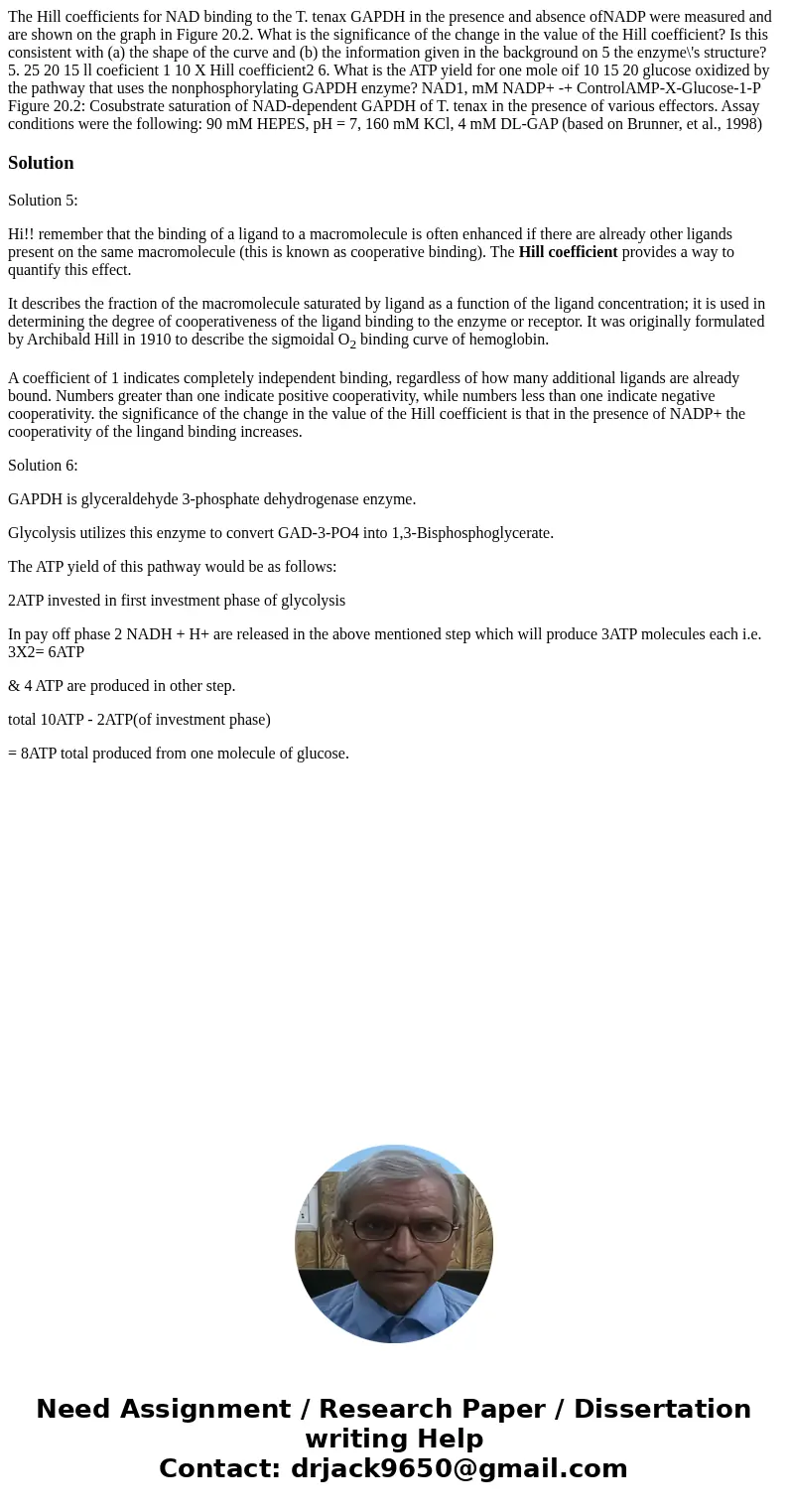The Hill coefficients for NAD binding to the T tenax GAPDH i
Solution
Solution 5:
Hi!! remember that the binding of a ligand to a macromolecule is often enhanced if there are already other ligands present on the same macromolecule (this is known as cooperative binding). The Hill coefficient provides a way to quantify this effect.
It describes the fraction of the macromolecule saturated by ligand as a function of the ligand concentration; it is used in determining the degree of cooperativeness of the ligand binding to the enzyme or receptor. It was originally formulated by Archibald Hill in 1910 to describe the sigmoidal O2 binding curve of hemoglobin.
A coefficient of 1 indicates completely independent binding, regardless of how many additional ligands are already bound. Numbers greater than one indicate positive cooperativity, while numbers less than one indicate negative cooperativity. the significance of the change in the value of the Hill coefficient is that in the presence of NADP+ the cooperativity of the lingand binding increases.
Solution 6:
GAPDH is glyceraldehyde 3-phosphate dehydrogenase enzyme.
Glycolysis utilizes this enzyme to convert GAD-3-PO4 into 1,3-Bisphosphoglycerate.
The ATP yield of this pathway would be as follows:
2ATP invested in first investment phase of glycolysis
In pay off phase 2 NADH + H+ are released in the above mentioned step which will produce 3ATP molecules each i.e. 3X2= 6ATP
& 4 ATP are produced in other step.
total 10ATP - 2ATP(of investment phase)
= 8ATP total produced from one molecule of glucose.

 Homework Sourse
Homework Sourse